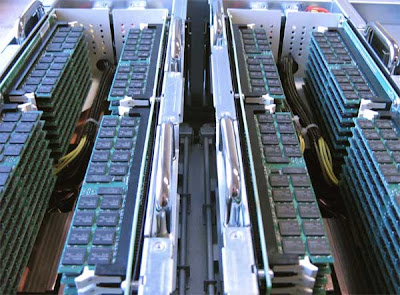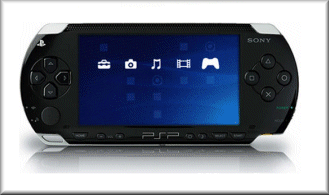
So I'm a bit of a hardware geek, as mentioned before. My special interest lies with the latest and greatest
video cards. Mainly because these have the most to do with how good the PC games look. Also, they are the most powerful parts of a computer.
Take a modern sports car for example. There's the electronic brain, that controls and oversees the functions of each component (that would be the equivalent of a
CPU or processor in a computer) and then there's the engine, that roaring, raving power which makes the car go
super-fucking-fast (that would be the equivalent of a videocard in a computer). That's the bit that gives you the most enjoyment, obviously.
A CPU is like a
jack-of-all-trades by nature. It can do anything you ask it to do - it can generate graphics like the video card, generate sound like the sound card and run almost any sort of code or program. The trouble is, it does none of these things very well. That's the price you pay for being
versatile. Any roleplayer knows what I'm talking about.
That's why special cards popped up in the first place. At first they were simple
low-power crutches for the CPU to lean on when things got tough, but now they far surpass the CPU in their own line of work.
An example - in 2003 a test was conducted, to see how big of a difference there is between the video card and CPU when rendering 3D images. The results? CPU rendered one frame in about 2 minutes 30 seconds, while the video card rendered the same scene at about 15 frames per second. That's a
2250x difference.
Today, this difference is even greater. Unfortunately no-one has repeated this test, so we have only raw numbers to go by. There are two of those - the number of calculations per second and the amount of available memory bandwidth to move data and results to and from the CPU/GPU (graphics processing unit, the heart of the video card).
The most modern and powerful
Intel Core 2 Quad 2,66 GHz CPU (that's actually four 2,66GHz CPU-s in one package) does calculations at a rate of
41 GigaFLOPS (that's 41 billion floating point operations per second. Floating point operation is the kind of calculation where there is no final outcome, like calculating the value of PI - it just keeps on going for millions and millions of decimal places). It has a memory bandwidth of
12,8 Gigabytes/s available to it.
Now let's take the most powerful video card in existance, which should appear somewhere around February 2007. It will be known as ATI Radeon X2900 XTX, probably. The GPU on this monster does
512 GigaFLOPS and the memory bandwith available to it is about
128 GB/s. Put two of them to work in a pair, and you have
1024 GigaFLOPS and
256 GB/s available power.
-----------------------------------------------------------------------------------------------
EDIT: As it turns out, this card never saw the light of day. AMD had serious issues with achieveing the clockspeeds they wanted within a reasonable power envelope (it's enough to just mention that the GPU overclocks wonderfully to 1,2GHz and beyond, but unfortunately even LIQUID NITROGEN does not seem to be sufficient to cool the beast!). In May 17, they launched the 2900 XT 512MB, which, while definitely an interesting piece of technology, utterly failed to take on the GF 8800 GTX, vieing for a win over the 8800 GTS most of the time. At least it's priced competitively - 5800 EEK could buy you one right now, while the 8800 GTX prices have skyrocketed to 9000 EEK and above.
However, 1 TERAFLOPS in a box is still quite doable with these 2 cards in Crossfire and two 4-core AMD "Barcelona" processors thrown in.
------------------------------------------------------------------------------------------------
Now that's the kind of power I'm talking about. I mean, it's ridiculously powerful. Speaking from the graphics viewpoint, it is the
equivalent of having
25 Core 2 Quad 2,66GHz CPU-s doing your graphics processing (one of those CPU-s will set you back a hefty $1000, while the video card costs about $550 a piece).
And man, does it show. Look at the screenshot above (and follow this
link for a demo video). This is what the last generation was capable of, fall 2005.
I can't wait to see what they can do with this one. It will probably blow my mind.







